A Greener Future: The Race to Develop Sustainable Solutions to Replace Fossil Fuels
Globally, the world is changing, and with more awareness of fossil fuels’ harmful effects, more sustainable energy sources are needed urgently. The race for change is not just because of the environment but also for economic opportunity, technological innovation, and social equity. The race to replace fossil fuels is ongoing, and the stakes have never been higher. We must act now to secure a sustainable future.
While many countries are now turning to solar power, wind energy, geothermal energy, and hydropower as the future of energy, the reality is that the majority of our homes, schools, offices, public buildings, and manufacturing plants are still heavily dependent on fossil energy. Despite its perceived reliability and affordability, the truth is that fossil energy does more harm than good, contributing to harmful carbon dioxide (CO₂) emissions in the atmosphere.
Why There is a Need for Change
The primary energy sources for over a century have been fossil fuels, such as coal, oil, and natural gas. Although they have powered economic growth and technological advancement, they are the biggest villains behind the climate crisis. Fossil fuels release carbon dioxide and other greenhouse gases into the atmosphere, contributing to global warming, rising sea levels, and extreme weather. Developing more sustainable solutions is necessary to fight climate change.
Furthermore, the extraction and production of fossil fuels often come at a high cost to communities, ecosystems, and public health. From devastating oil spills to pervasive air and water pollution, the damages caused by fossil fuels extend far beyond their immediate benefits.
The chart below highlights the rise in temperature worldwide due to climate change. This represents one of the damages caused by fossil fuels.
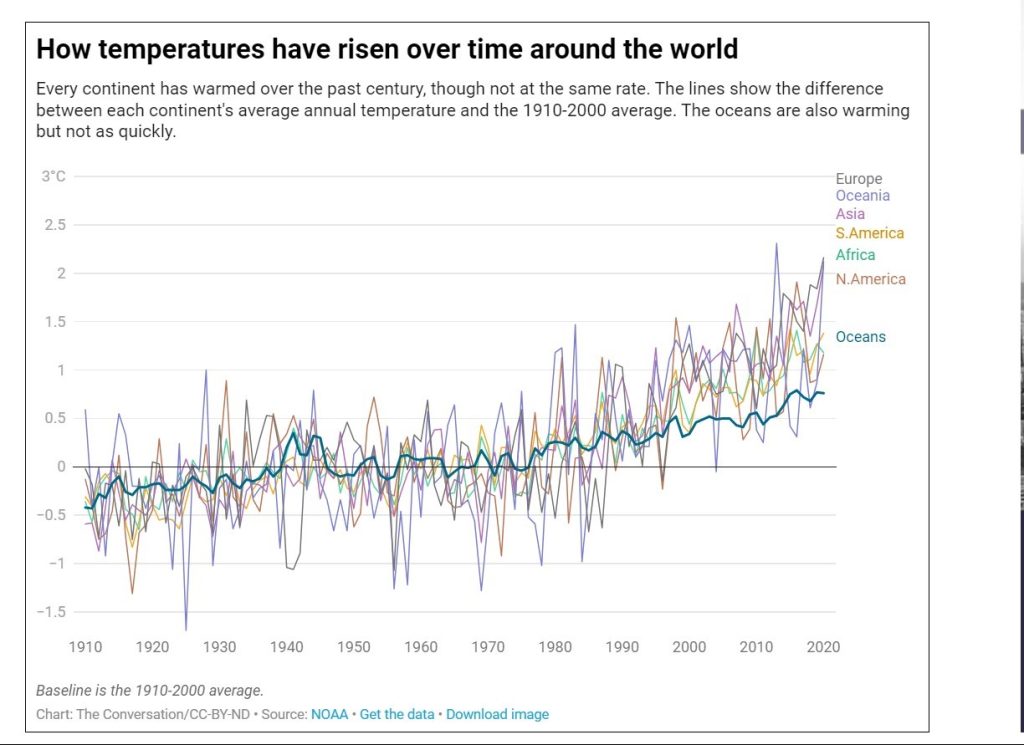
Is Renewable Energy Better than Fossil Fuels?
You may wonder if renewable energy is a better alternative to fossil fuels. The answer is not far-fetched: Renewable energy is more sustainable. There is a finite amount of fossil fuel on earth, made from ancient biological matter that has been in a pressurized environment for hundreds to thousands of years. This process cannot be recreated in a short time, so we will run out soon.
On the other hand, renewable energy sources like solar power, geothermal, wind, and hydro energy rely on constant and consistent resources. As long as the sun shines, the wind blows, and the earth produces heat, there will always be a power supply.
In addition, renewable energy sources produce little or no greenhouse gases or pollutants, making them clean and safe for humans and the atmosphere. Fossil fuels, on the other hand, continue to damage the atmosphere and ozone irreparably.
The Viable Alternatives to Fossil Fuels
Renewable energy sources come in different types and are viable alternative sources to fossil fuels.
- Solar energy: Solar energy is one of the most available energy sources and is one of the viable alternatives to fossil fuels. The rate at which solar energy intercepts the earth is about 10,000 times greater than the rate of energy consumed by energy.
Solar technologies can deliver heat, natural lighting, and energy for many other applications. They generate electrical energy from the sun through photovoltaic panels or mirrors that concentrate solar radiation.
Solar power is more likely to substitute fossil fuels because it is more accessible to the average individual. It can be installed on roofs of houses, schools, and offices more easily. The price of solar panels has dropped drastically in the last decades, making them affordable and one of the cheapest sources of electricity.
- Wind Energy: Wind energy utilizes the kinetic energy of moving air by using large wind turbines located on land (onshore), sea, or freshwater (offshore). Although wind energy has been used for years, onshore and offshore technologies have evolved over the years to maximize the energy produced with larger rotor diameters and taller turbines.
Although average wind speeds vary based on location, the world has more technical potential for wind energy than global electricity production, and there is enough potential in most regions to support significant wind energy deployment. Even though average wind speeds vary by location, strong winds can be found worldwide. However, the ideal places to produce wind energy are occasionally far from cities.
- Hydropower: Hydropower generates power from the natural energy of water flow. It was the earliest way of generating power until the rise of fossil fuels, which led to its decline. Now, it is making a comeback.
Hydroelectricity is a clean energy source that contributes to flood control and irrigation techniques and can be used anywhere there is a natural water flow. Rivers and reservoirs can produce hydroelectricity. While run-of-river hydropower facilities use the energy from a river’s available flow, reservoir hydropower plants use water that has been stored in a reservoir.
Presently, the biggest renewable energy source used to generate electricity is hydropower. It depends on usually consistent patterns of rainfall and is susceptible to
droughts brought on by climate change or ecological changes that affect rainfall patterns.
- Geothermal Energy: Geothermal uses the accessible thermal energy from the earth. In geothermal reservoirs, heat is extracted using wells or other means. Hydrothermal reservoirs are naturally sufficiently hot and permeable, while enhanced geothermal reservoirs that are sufficiently hot and permeable but improved by hydraulic stimulation are called enhanced geothermal systems.
Once on the surface, fluids of different temperatures can generate electricity. Generating electricity from hyperthermal reservoirs is ancient and reliable, as it has operated for over 100 years.
- Bioenergy: Bioenergy is another excellent alternative to fossil fuels for energy production that is less harmful to the environment. Bioenergy is made from various organic resources known as biomass, including agricultural crops for liquid biofuels and wood, charcoal, dung, and other manures for heat and power production.
For this reason, specialized crops or trees, leftovers from forestry and agriculture, and diverse organic waste streams are cultivated. Biomass can be burned to create heat (thermal conversion), converted directly into electricity, or processed into biofuel. Thus, this energy source is cheap and renewable and reduces the dependency on fossil fuels.
However, bioenergy is not considered a clean energy source because the energy generated by burning biomass creates greenhouse gas emissions at lower levels than burning fossil fuels.
- Tidal Energy: Tidal energies are generated using seawater waves or currents’ kinetic and thermal energy to produce electricity or heat. Ocean or Tidal energy systems are still in an early stage of development, with several prototype wave and tidal current devices being explored. The theoretical potential for ocean energy easily exceeds present energy requirements.
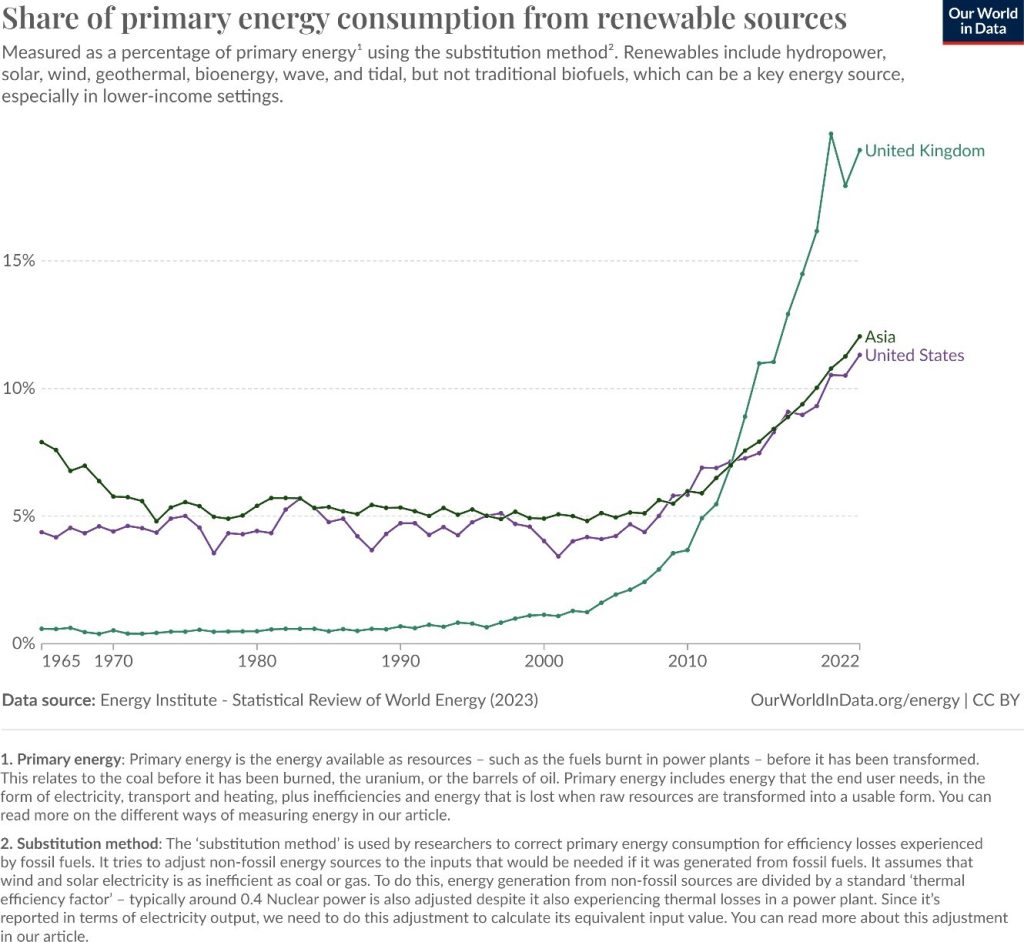
The chart above shows increased consumption of renewable sources as primary energy. From 2010 to 2022, we noticed a rise in the use of substitution energy sources such as solar power, hydropower, geothermal, bioenergy, wind, and tidal.
What is the Best Substitute for Fossil Fuels
It is difficult to say which of these alone can replace fossil fuels. Fossil fuels are more likely to be replaced by a combination of renewable energy sources. Solar power is more accessible to the average individual, as it can easily be installed on the roofs of any building, and exposure to the sun makes it an easy and cheap substitute for fossil fuels.
Tidal energy is a relatively recent development in sustainable energy but has already shown great potential. However, because it is a new energy source, it is still being determined if it alone could replace fossil fuels. Wind energy is another promising substitute for fossil fuels, as it uses an infinite natural resource. It generates no waste and leaves the environment relatively clean.
In the long run, the best substitute for fossil fuels is to use all clean and renewable energy sources and then increase dependence on clean energy sources as they become more efficient.
Reasons to Accelerate the Transition to Sustainable Energy To Replace Fossil Fuels
Here are four reasons why accelerating the transition to sustainable energy is crucial for a healthy and safe planet:
- Renewable Energy Sources are Readily Available: Many countries import fossil fuels, which makes them vulnerable to geopolitical shocks and crises. However, renewable energy sources are available in every country, region, city, and community. Yet, the potential is to be fully utilized. By 2050, 90% of the world’s electricity should come from renewable sources, according to estimates from the International Renewable Energy Agency (IRENA).
- Renewable Energy is Cost Effective: Renewable energy is the cheapest form of power supply in most parts of the world today. Prices of renewable technologies are dropping drastically. Between 2010 and 2020, solar energy costs decreased by 85%, while onshore and offshore wind energy costs decreased by 56% and 48%, respectively.
The price drop has made renewable energy more attractive worldwide, including low– and–middle–income countries. With the falling costs, there is an excellent opportunity for much of the new power supply over the coming year to be provided by sustainable sources. By 2030, affordable energy from renewable sources might account for 65% of the world’s total electrical supply.
- Clean Energy Sources are Healthier: The World Health Organisation (WHO) recently reported that over 13 million deaths worldwide each year are attributable to preventable environmental causes, such as air pollution, and that over 99% of people worldwide breathe air that exceeds air quality regulations and poses a health risk. Fossil fuel burning is mainly responsible for unhealthy fine particulate matter and nitrogen dioxide levels. Fossil fuel-related air pollution cost the economy and healthcare system $2.9 trillion in 2018, or around $8 billion daily.
- Renewable Energy is Economically viable: In 2022, almost $7 trillion was spent on subsidizing the fossil fuel industry, including explicit subsidies, taxes, and health and environmental challenges that were not included in the cost of fossil fuels.
- In comparison, about $4 trillion a year, including investments in technology and infrastructure, must be invested in renewable energy until 2030 to reach net-zero emissions by 2050.
The upfront cost of renewable energy may be daunting for many low—and mid-income countries, and many will need financial and technical support to make the transition. However, in the long run, the investments in renewable energy will pay off. Reducing pollution and climate impacts alone could save the world up to $4.2 trillion annually by 2030.
Key Factors for Developing Sustainable Solutions to Replace Fossil Fuels
- The Role of Technology and Innovation
Technological advancements are driving down the costs of renewable energy and improving the efficiency of sustainable technologies. Battery storage solutions are becoming increasingly important as the race to integrate sustainable sources like solar and wind energy intensifies.
Smart grids, energy-efficient buildings, and electric vehicles are also part of the steps towards sustainable energy use. As these technologies mature and become more widespread, they will further accelerate the race to sustainable energy from fossil fuels.
- Policy and Investment: Government policies and private sector investments are crucial to replacing fossil fuels with sustainable energy. Subsidies, tax incentives, and regulations can encourage sustainable energy development. In addition, investments in research and development are essential for driving innovation and lowering costs.
- Challenges Ahead: The race from fossil fuels to renewable energy sources will take time. It is necessary and achievable, but it will face setbacks and challenges. The unpredictable nature of renewable energy sources, the need for energy storage solutions, and the infrastructure and resources required to support worldwide adoption are all challenges that must be overcome.
In addition, economic and political interests attached to the fossil industry may resist change. Ensuring a transition that supports workers and communities that depend on fossil fuels is essential for a smooth and equitable transition.
Conclusion
The race to develop sustainable solutions to replace fossil fuels is one of the defining challenges of our time. With the constant climate change, we need more time. By embracing renewable energy sources, investing in technological innovation, and implementing supportive policies, we can build a greener, more sustainable future for future generations.
While the race may be challenging, the benefits are immeasurable. It is possible and essential for the world to be powered by clean, renewable energy. Let’s use the opportunity we have to shape a future that is not just prosperous but also sustainable for all.
References
https://ourworldindata.org/renewable-energy
https://science.howstuffworks.com/environmental/green-science/climate-change-charts.htm
https://www.inspirecleanenergy.com/blog/clean-energy-101/can-alternative-energy-replace- fossil-fuels
https://www.un.org/en/climatechange/raising-ambition/renewable-energy



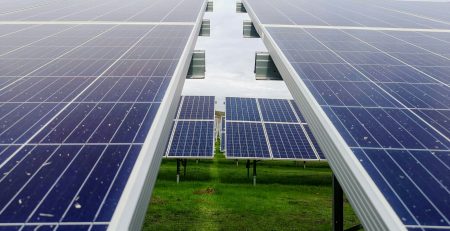

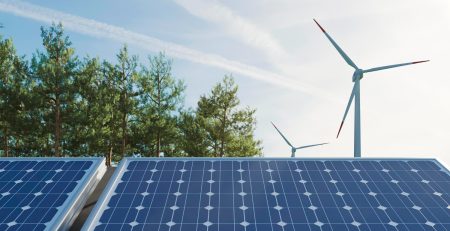
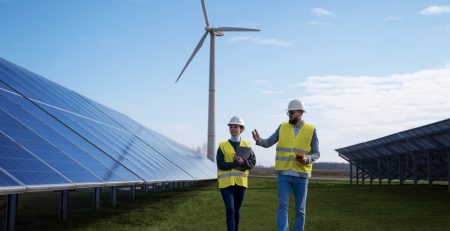




Leave a Reply